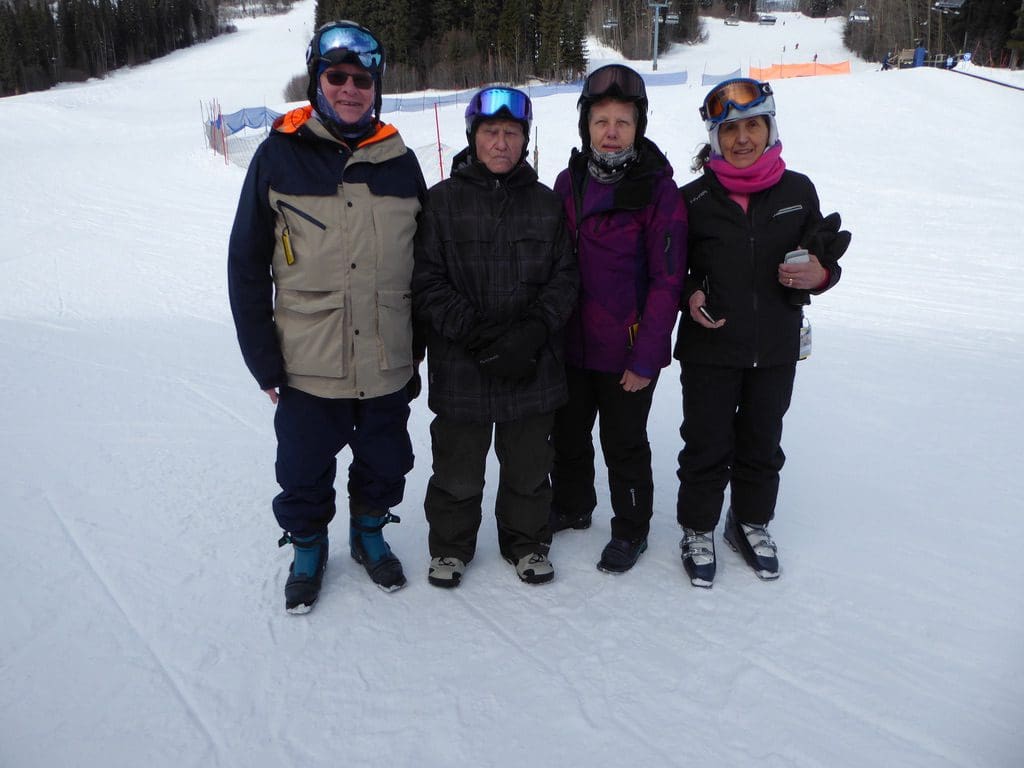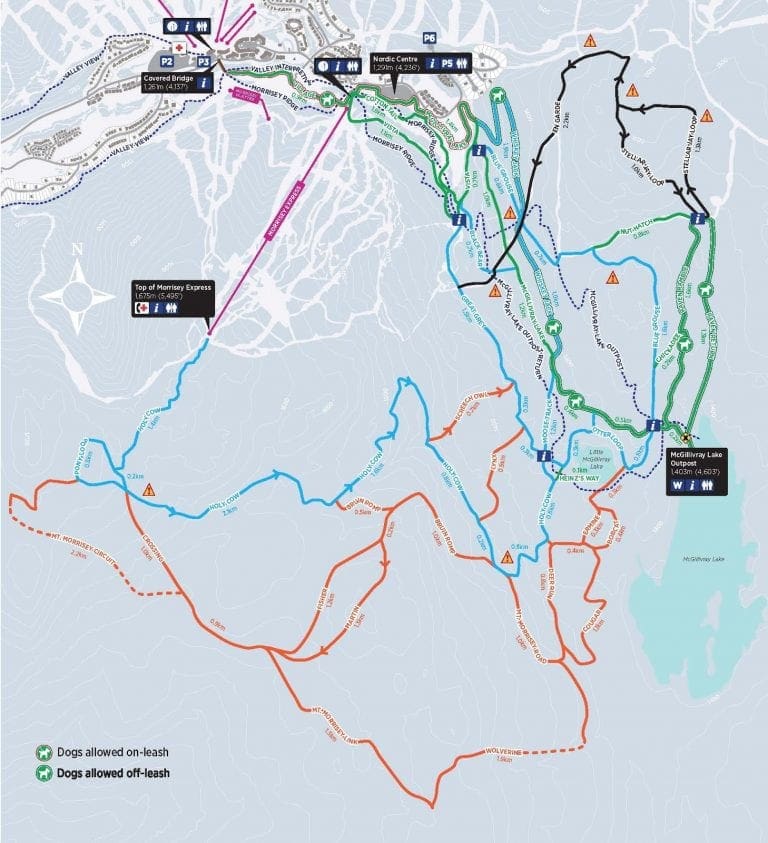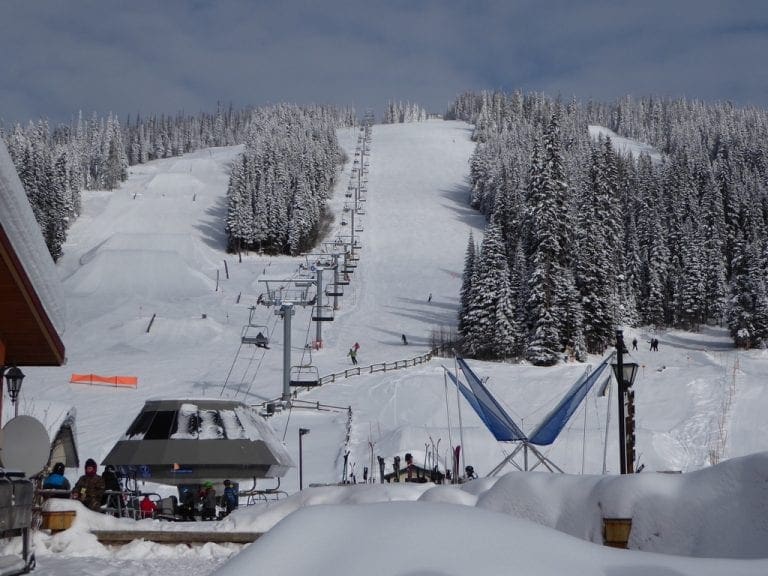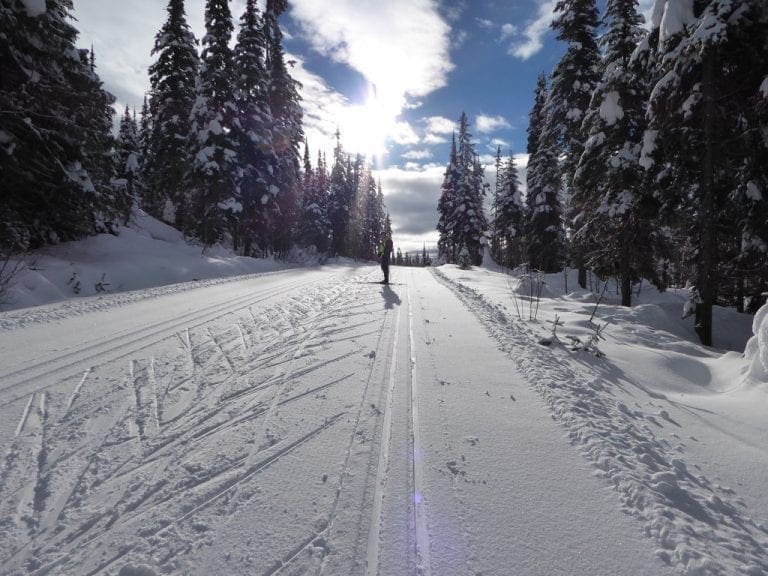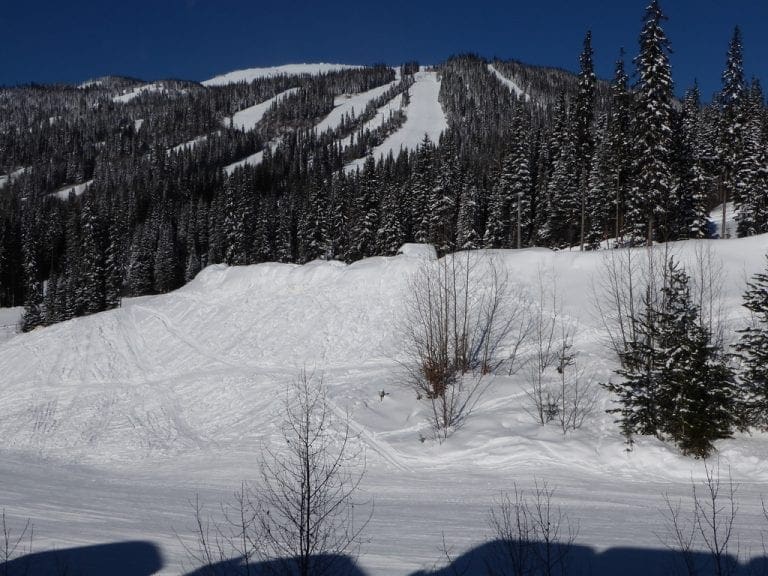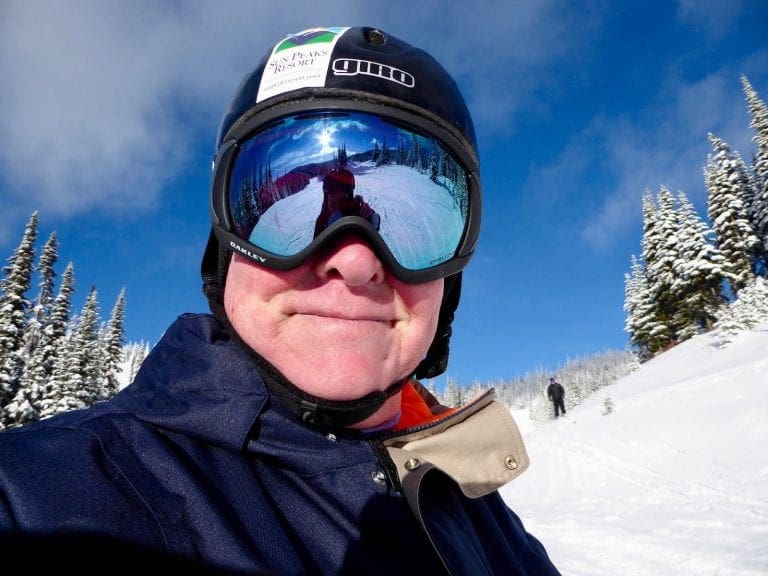Sun Peaks trip 2018 – Week 3
 |
| Distant snowy peaks |
Wednesday 31 Jan 2018. A delightful sunny day. We were on the sixth chair for runs down Homesteader and Granny Greenes. Then over the Cahilty 5 Mile for two runs (we were first down the first of those and it was extremely good). Then we met up with our friends Bruce and Juliet Brooks for three more runs and a coffee at what was Bentos. Bruce is 89 and still snowboards. 2:23 hours, 3,615m descent, 35km (including lifts), 48.5 kph max speed (mid way down 5 Mile), 32 hours for recovery (which is building up), 47% of the time my heart rate was in ‘walking’ zone. A very good day.
 |
| An old photo of Geoff and Bruce |
Thursday 1 Feb 2018. Blue sky with a light cloud cover. A day off for me. Helen went out for several runs with Juliet. Today, at Cahilty the kids from the school have a strings lesson. Looking out the window, I saw a double coming down the hill – two girls, one standing on the back of the other’s skis holding her violin case – and bundle themselves down the Cahilty back steps. Quickly followed by several more arriving with violin cases – many on snowboards. Even a cello. What a great sight.
At Nancy Greene’s Cahilty Hotel & Suites, John Douglas put on a Hot Dog lunch for guests & staff. Many turned up.
I was going to write about express chairlifts. For most of its journey, each chair is clamped to the main cable that is travelling at 16 kph. That speed is far too fast to people to be able to load – a metal and wood chair smashing into their legs at that speed would break bones. So, just before the point where people load at the bottom of the hill, the chair is unclamped from the main cable and re-clamped onto a slower cable (travelling at about 3kph), then unclamped and re-clamped to the main cable after the load point.
 |
| Covered bridge |
Friday 2 Feb 2018. Cloudy and ‘f’ on the mountain including Sundance. Fresh snow on top of the grooming. It should be good, but apart from the first run, we struggled. 1:40 hours, 22.3km, max 43.2 kph, 2,075 m descent. We took Elevation lift to re-ski the top of Cahilty (which was good the first time but not so good when we got to it again 15 mins later. Elevation is a ‘fixed’ (ie non-detachable) chair and runs at 8 kph. To help loading, the lifty grabs the chair to hold it back just as skiers load. We certainly do not cope well in chopped up snow. Very fussy.
Saturday 3 Feb 2018. Snowing. 10 cm overnight and light to heavy falls throughout the day. I had one run (Homesteader) and Helen had two more (Cahilty/5 Mile). The snow quality is inconsistent. Cream to grippy. The lifty from Gunnedah said ‘ When the trees turn green, the snow turns to shit.’ True dat. Most of the lifties are from Aus.
Sunday 4 Feb 2018. Snowing all day. A total of 30 cm over the last two days. We had another day off and in the afternoon watched a very boring Super Bowl. 60 minutes of actual play takes more than 3 hours. This is a story from the day “I know it’s late notice, but a close friend of mine has two tickets for the Super Bowl in Minneapolis, MN at the new U. S. Bank Stadium on Sunday, February 4th They are box seats and he paid $3,500 per ticket, which includes the ride to and from the airport, lunch, dinner, a $400.00 bar tab and a pass to the winners locker room after the game. What he didn’t realize when he bought them last year was that it’s being held on the same day as his wedding. If you are interested, he is looking for someone to take his place. It’s at St. Paul’s Church at 3 p.m. Her name is Ashley. She’s 5’4′, about 115 pounds, a good cook, loves to fish and hunt and will clean your truck. She’ll be the one in the white dress.”
Monday 5 Feb 2018. We skied in the morning. The first few runs were good – fresh snow on top of grooming, but, as usual, it became chopped up and difficult very quickly. A first run down Sundowner, Homesteader, three times down Cahilty 5 Mile (Helen did twice down Exhibition). We finished off with a run down Rambler as a green run to take us to the top of the platter. What a mistake to make – very chopped up and difficult. 2:13 hours, 30.25 km, max speed 43 kph, 3,110 m descent, 16 hours for recovery.
That will be the last day of resort telemark for a while. We have given it a good shot, but do not find it as enjoyable as it used to be. On newly groomed snow, we are fine. But as soon as the snow becomes choppy, we (especially me) find it hard to cope. I find it extremely difficult to get up after a fall and almost always give my right knee a good twist when getting back on my feet.
